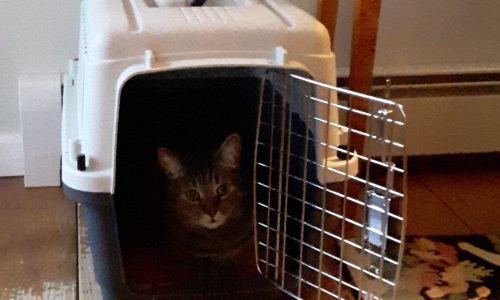TEAMWORKS

Practice makes purrfect.
All too often, TEAM gets a call from an exasperated—sometimes bloodied—person who has to cancel a cat’s appointment at the last minute for this frustrating reason: “I can’t get him in the carrier.”
As anyone who has tried to force a resistant cat into a carrier knows, even the sweetest pet can become a frenzied bundle of teeth and claws! But being able to transport your cat in a carrier is critical to his health and well-being. Here are some tips to make it easier for you, your cat, and the veterinary staff who has to handle your pet on arrival.
- Get the carrier out several days before you plan to use it, not the night or morning before, and put it where the cat can see it, smell it, and play in it so that it’s no big deal (it doesn’t hurt to do this once in a while anyway);
- Give him his favorite treat or some catnip in the carrier so he gets a reward by going in and out;
- Lightly spray the carrier and the area around it with a cat-pheromone spray, like Feliway, which has a calming effect;
- On the day of transport, once the cat is inside, cover the carrier on three sides with a towel or sheet to reduce visual stimuli;
- Spray the pheromone in the car (and/or on whatever you use to line the carrier);
- If you play music, keep it soft and soothing;
- Keep calm, and keep quiet—no cajoling or “baby talk” (experts say high-pitched talking, like loud music, makes cats anxious). Your cat will pick up on your mellow mood.
P.S. The best time to get your cat used to the carrier (and even some short car rides) is when he is a kitten and everything is still fun.


